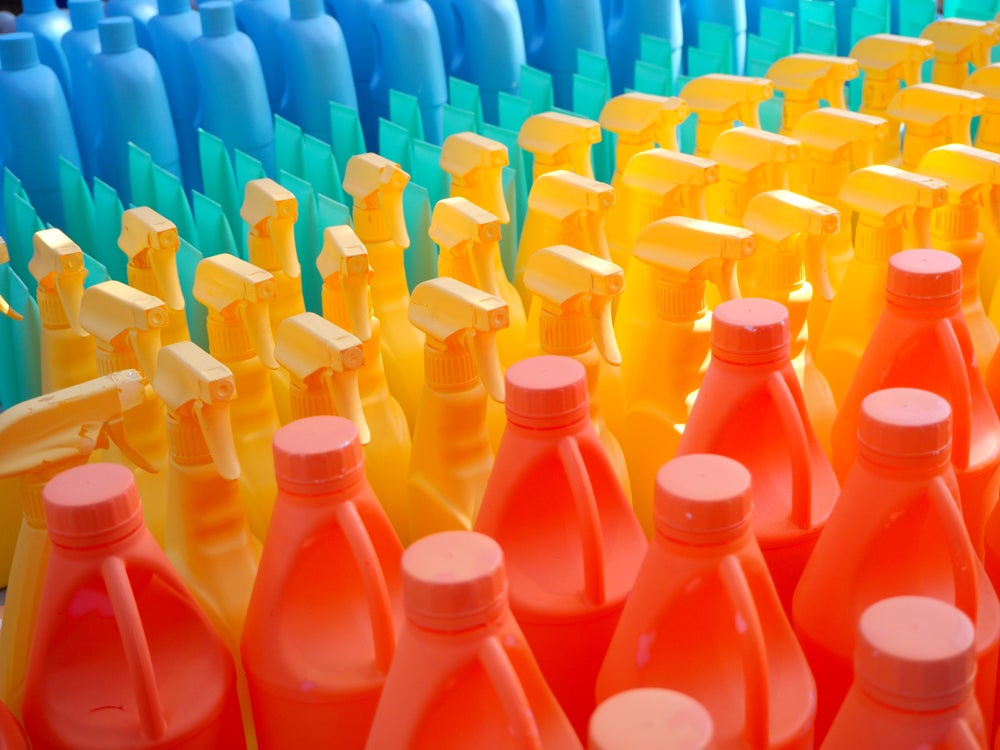
The UK Government introduced the plastic packaging tax on 1 April 2022, which is designed to give companies a financial incentive to clean up their act and meet worldwide environmental targets.
The tax is expected to affect 20,000 companies and means crucial decisions will need to be made on the type of packaging being used in future. Lifestyle Packaging’s global head of marketing, Rich Quelch tells Packaging Gateway’s Ryan Ellington exclusively how the UK’s new plastic packaging tax will impact business.

Who will the plastic packaging tax affect and how much of an impact will it have?
UK manufacturers and importers of over 10 tonnes of plastic packaging a year will need to pay the new tax of GBP200 per tonne. This applies to any plastic packaging with under 30% recycled content.
Businesses will also need to conduct regular due diligence checks to ensure any plastic packaging imported or manufactured does not fall below the 30% threshold or else face fines. This means keeping a record of all checks conducted as well as completing plastic packaging tax returns over the accounting periods if the business is liable to pay the tax.
The ongoing administrative costs of new registrations and returning tax forms are anticipated to have a net burden of GBP0.4m annually. Business customers of these manufacturers and importers, in addition to consumers buying plastic packaging, are also likely to be affected should they choose to pass on the increased costs.
The UK Government claims this cost to the consumer will be negligible, however, it’s timed to come into effect when the cost of living is rising across all areas.
How much money is the plastic packaging tax expected to raise for the UK Government?
The UK Government predicts that GBP235m will be raised from the plastic packaging tax between 2022 and 2023. This figure may begin to decline from 2024 as more businesses make the switch to recycled plastic packaging materials and reduce reliance on plastic packaging, dropping to GBP225m by 2025 and GBP210m the following year.
How will the money raised through taxation be spent?
As it stands, there is no information as to how the money raised from the plastic packaging tax will be spent, with the Government giving no indication as to whether this money will be ringfenced to support recycling efforts or to work towards eliminating avoidable plastic waste as part of the Government’s 2042 target.
is likely a portion of the GBP235m generated will be used to cover administrative costs for HMRC. Then, it’s expected the remaining money will be returned to the central government fund, likely to recuperate losses during Covid-19.
Is the tax expected to increase in the future?
While the Government has not shared any plans to increase the tax in the future, it would not be unreasonable to expect a hike in tax rates should there be a stalled uptake in businesses switching to recycled plastic packaging.
The government estimates the tax could inspire a surge in the use of recycled plastic by 40%, saving 200,000 tonnes of carbon in the first year. However, with the price of recycled plastic currently outweighing the costs of the tax, there may not be enough economic incentive to convince businesses to switch to recycled plastic packaging, which could lead to a steeper tax.
Is recycled plastic the answer to the waste crisis?
Simply put, no. Recycling plastic packaging isn’t enough to combat the overproduction of plastic. And to make matters worse, just 9% of the world’s plastic gets recycled. In part, this is due to confusion over what can and can’t be recycled and how with only 8% of UK residents believing recycling labels are clear.
Furthermore, with recycled plastic prices reaching an all-time high, jumping 70% in the last year, many businesses will find it more profitable to take the financial hit of the plastic packaging tax rather than make the expensive switch to recycled plastic packaging.
Alternative eco-friendly technologies such as compostable and biodegradable packaging may provide a better solution. Reusable packaging is also a popular option as consumer demand increases for refillable products, significantly reducing waste.
What products are exempt from the plastic packaging tax?
There are several additional exemptions to the tax that could be relevant when making your tax returns from 1 July 2022 onwards. One of these exemptions applies to plastic packaging that is used for human medicinal products i.e. any product used to prevent or treat diseases or make a medical diagnosis.
The guidance from HMRC states that any plastic packaging imported or manufactured for the immediate packaging of licenced human medicinal products is exempt from the tax, with ‘immediate packaging’ defined by HMRC as a container (or another form of packaging) that will be in direct contact with the medicinal product once it is produced and packed.
Plastic packaging that is designed to be an integral part of the goods is also exempt from the tax. These goods need the plastic packaging to be essential to the use or consumption of the product and the packaging should be expected to be discarded once the goods are used. For example, printer cartridges, droppers and pipettes and even the rollerball of roll-on deodorant do not need to be included in tax calculations.
Additionally, plastic packaging that provides long-term storage for a product and can be reused for similar items once the goods have been used are exempt. This may include toolboxes, CD cases and first aid boxes. However, this does not include trays or tubs that store food and other products that once consumed or used, the packaging is discarded.
What role can consumers play in helping to reduce plastic use?
The primary responsibility for tackling the waste crisis should come from governments, however, the manufacturers of plastic packaging, the businesses that rely on it for their products, and consumers can all certainly do their part to help reduce plastic reliance.
The fact is customers set the tone for consumer trends – when enough customers start walking away from brands that don’t share their values, businesses will take note.
Challenging brands on their packaging choices is key to making a change and demanding better options. But until consumers put their money where their mouth is, little will be done to make an active change.



